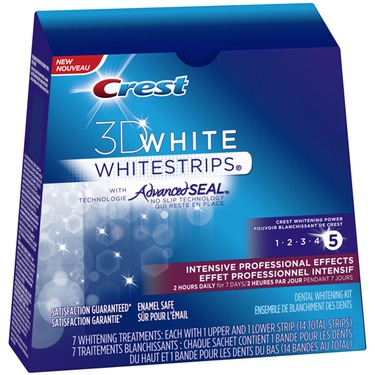Teeth Whitening
Teeth whitening is a cosmetic procedure for teeth that enhance a tooths shade for a more aesthetic, whiter appearence.What Are Teeth Whitening Strips?
There are also natural teeth whitening strips that use essential oils to whiten teeth. These products are considered safe to use at all, but they are not as effective as their non-natural counterparts.
Do White Strips Actually Work Though?
There are quite a few effective products out there, some of the products that have been approved by the American Dental Association (ADA) for effective and safe use include:
- Crest 3D White Whitestrips (Glamorous White, Vivid White, Brilliance White)
- Crest 3D Whitestrips Classic Vivid
- Crest 3D Whitestrips Gentle (Sensitive White, Vivid White Gentle, Sensitive)

There lots of other options for effective whitestrips beside Crest, you can find these products on Amazon. However, if you want products that have been proven to work, it may be best to purchase ADA approved dental products.
How Do Whitening strips Work?
Whitening strips work by applying a gel that contains either hydrogen peroxide or carbamide peroxide to your teeth, this is done daily (sometimes twice a day), for an extended period, usually weeks or months. If your teeth are extrinsically stained, you will stand a good chance of gaining a whiter smile. Extrinsic stains are caused by external factors usually attributed to lifestyle choices. If your stains are intrinsic, the strips may be ineffective at removing them since the cause may be underlying.
What are The Ingredients In A Whitestrips?
Polyethylene
Hydrogen Peroxide or Carbamide Peroxide
PVP (Polyvinylpyrrolidone) & Carbomer
PEG (Polymerization Ethylene Glycol)
PEG is commonly used as a thickening agent, this is what forms the gel-like consistency and it also plays a role in making it sticky.
Glycerin
Glycerin is a sweet, safe, non-toxic compound that is used to thicken the gel and will help to gently secure the strips in place.
Acrylates Copolymer
Sodium Hydroxide
Sodium Saccharin
Side Effects Of Whitening Strips
Yellow Or Gray Spots
Uneven application of the strip can be a common theme among at-home enthusiasts. It will be tricky to be consistent all the time when using white strips and you may miss areas of your teeth.
Allergic Reaction Or Irritation
Some of the ingredients used have been known to irritate the gums. While it may be rare to have an allergic reaction, it is possible. You may want to have an allergen test beforehand to see if you are allergic to them. If you do have an allergic reaction, it would be better to stay away from them entirely.
Tooth Damage & Sensitivity
Gum Tissue Damage
Pros & Cons Of Whitening Strips
Pros
- Effective when used properly (peroxide-based gels).
- Affordable and easy to purchase.
- Can be found in many stores or online.
- Fast and convenient.
- Easy to apply and remove.
- Less messy than LED whitening kits.
- Treatment is done in the comfort of your home.
Cons
- Can have irregular or uneven results if not applied correctly.
- Some brands are not as effective.
- Higher risk of sensitivity than other whitening products.
- Higher risk of gum irritation than other whitening products.
- Some have an unpleasant flavor.
- Can cause enamel damage if overused.
- If overused, they can kill too many good bacteria in your mouth.
